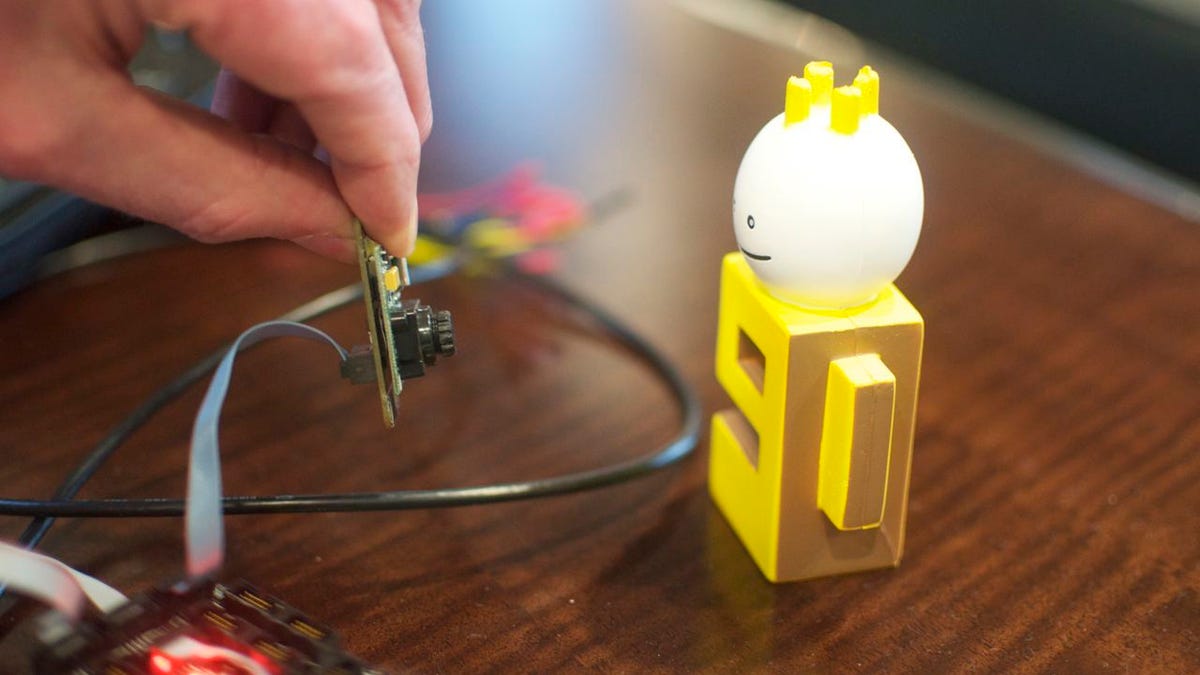Inside Microsoft's science fair
CNET gets an inside look at a Microsoft event designed to give employees a place to show off ideas they've built outside their everyday work schedules. Some could end up as real products one day.

REDMOND, WA.--It would seem to be just another day here on Microsoft's campus. In one building the next version of Windows is being built in secret, and in another the next version of Office. But this day is a little different from the rest. In a closed-off auditorium, a gathering of Microsoft employees are showing off their latest science projects.
Most may never see the light of day, but some could go on to become real products, or at least features in products of the future. This is all a part of what Microsoft calls its "science fair," a event that takes place every six months or so, and looks a lot like, well, a science fair.
There are poster boards with glued-on diagrams, candy to attract passers-by, and a myriad of computers running code cooked up during employee off-time. Microsoft's Research group holds a similar event on its main campus, and on its other campuses each year, called TechFest, which CNET has visited in the past.
The event itself is hosted and funded by "The Garage," a group within Microsoft that acts as an incubator for technology implementations dreamed up by its employees. Anyone can come to The Garage with their idea in the hopes of getting others to collaborate on it with them, or get it realized with the group's resources, which include both engineering and technical know-how. The idea behind the fair is to get some of those ideas out there, as well as for groups to possibly come together and collaborate on projects of an even grander scale.
During today's fair I get to see just three of 50 exhibits that make up the fair. The first is made by four employees and called "Human Beatbox." It makes use of Microsoft's hit Kinect peripheral and its skeletal tracking and depth-sensing prowess to turn your body into a giant input device that can punch or kick beats from a virtual set of drums, keyboards, and cymbals. There's even a hip-hop mode where your flailing arm can simulate a record scratch.
Alongside the play area, where co-creator George Perantatos (who also happens to be a senior program manager for Office Labs) is hitting the virtual instruments, is a secondary display showing users what the Kinect is seeing--complete with working skeleton tracking that people on the side can watch in real time.
The second exhibit is one that's actually on its way to being a real consumer-facing service through Microsoft's Office Labs site. Called "Seamless Desktop," this software tool lets you connect the mouse and keyboard together from multiple machines, and send that information in the cloud. The idea is nothing new per se, with consumer products like Synergy and MaxiVista that can do the same trick, but Seamless Desktop promises to scale beyond those products one day.
Known internally as "magic mouse," Seamless Desktop is currently used by around 10,000 Microsoft employees. Besides sharing the mouse and the keyboard, it has a few other tricks up its sleeve, like bringing your clipboard across machines--that includes any images, which come along for the ride. It's also got a neat feature, that CNET was told will probably be cut from the final shipping tool, that can automatically grab the latest photo from Bing.com, and turn it into your desktop background.
The third and final tool, called .NET Gadgeteer is one that fans of Bug Labs' Bug are likely to latch on to. The Gadgeteer is a small device with an ARM7 processor and a logic board full of ports that users can plug various devices into, to change the kinds of things it can do. The technology itself is a collaboration between Microsoft Research and .NET guru Colin Miller, and has been shown in public before in places like Maker Faire.
Today the device is being hooked up with a small display in one of the plugs, with a camera module being plugged into the other. With that combination, you suddenly have a camera. With different accessories, you can turn that same board into a security camera, and a Wi-Fi-controlled robot with wheels. The idea is to let developers, and enthusiasts alike come up with their own add-ons, and find new creations that can take advantage of the platform's extensibility, while making use of Microsoft's own tools like Visual Studio.
Like any science fair, there is a judging panel, which deems one of the displays a winner. Microsoft employees who attended the three-hour open house were also able to put in their nominations for their favorite product. What does the winner ultimately get? A sticker to put up on their office door or cubicle wall, as well as the chance to grab some time with someone in Microsoft's senior leadership to pitch their idea into the makings of a future product or service. During today's fair, both the Gadgeteer and Seamless Desktop pick up the honors, winning the coveted "golden volcano" award, which CNET was told is not actually a volcano or made out of gold.
Microsoft's next big science fair, TechFest, happens in March, and will include demos from Microsoft's research teams around the world.

